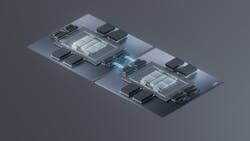The When, Where, and Why of Using Chiplets (Download)
Monolithic integration has been the dominant approach to chip design since the rise of VLSI-based ASICs decades ago. In a monolithic design, all of the building blocks of integrated circuits such as logic, memory, analog interfaces, and specialized accelerators are integrated onto a single piece of silicon. The system-on-chip (SoC) model gives engineers a compact, tightly coupled architecture with well-established design and verification flows.
However, the continued scaling of transistors and the growing complexity of systems push the limits of this approach. Modern chips are increasing in size, and the most advanced process nodes have become more expensive and yield-sensitive. As a result, fabricating all of the usual functionality of a high-performance chip on a single die can introduce significant cost, risk, and inflexibility.
